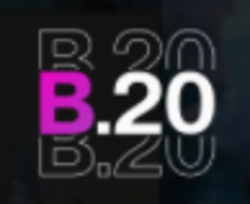It does not matter whatever the amount of cryptocurrency holdings you have stowed away in your desktop or mobile wallet, it could be 1 $EZC or 1000 $DASH, no matter the coin weight held, it could all vanish in a literal flash with just a glitch of the computer, power outage, sheer accidental or malicious act, those coins could be gone, forever with no way of recovery.
It does not matter if the coins or cryptocurrency tokens are password protected with an encrypted wallet, sometimes data loss suddenly and without warning if it should occur, this can affect not only your crypto wallets and balances but a plethora of working applications that are running with stored data that can be affected too.
To cut the risk of asset loss it is best practice to backup your crypto wallet account addresses to a suitable secure storage medium, this should, in turn, be stored off the computer or device with the wallet installed or running on, a USB thumbdrive is suitable for this.
There are three main ways of backing up a wallet and its addresses:
- Through physical backup of the wallet.dat file contained in the data directory (this is a normalized way of backup but not entirely safe as the actual wallet.dat file can be corrupted very easily – a single wallet.dat could very contain a single or multiple set of addresses contained within that wallet).
On some desktop wallets there is an option to backup the wallet.dat from the File>Export or similar menu option, if using this option backup the wallet.dat file to an external medium off the computer for security.
- Dumping of the private keys for each account address contained within the wallet, this is a simple process which can be carried out in the Debug Console with the dumpprivkey command:
Open the console from the File > Debug Window option and type in dumpprivkey then the address you would like to backup like:
dumprivkey TwDJq2SALxkUfPnj5gskbDLGaU6FScT6VW
*The uniquely tied private key will then be displayed in a simple text format that should be copied and backed up (as well as the public address for identification) as per this example for $TROLL coin:
*If the wallet has been encrypted (which it should for security), it will need to be unlocked from the menu bar or from the console/command line with the command:
walletpassphrase YourSecurePassword 600
With the numerical part setting the amount of seconds that the wallet is unlocked (600 being 10 minutes)
- Dumping the wallet addresses, singularly or wholey into a mnemonic format, this is a string of words and is simpler to carry out that the private key method for most people.
From the settings menu an option can sometimes be found to backup the mnemonic key, the set if words should be copied or recorded on a medium away from the computer, as these are a set of words a pen and paper is all that is needed but this strict can be stored on a USB thumbdrive in a text file.
If there is no option from the wallet to backup the wallet.dat file you should navigate to the wallets data directory, on Windows the default file path is
c:\users\YourAccount\Roaming\Appdata\Trollcoin
Trollcoin file path example on Windows shown above, change the data directory <Trollcoin> to the location of your wallet
In many cases, depending upon the amount of coin address inputs, you may need to combine the wallet addresses by reconciling to a single address for ease of backup. You can read more about this in the Coin Control article
Whatever method you use to backup your cryptocurrency wallets is always a good one but do make sure to keep the backup safe, maybe even make two backups and never ever show anyone the data as the private keys/mnemonic phrases contain all your assets and if these are lost so are your coins/tokens.
















































